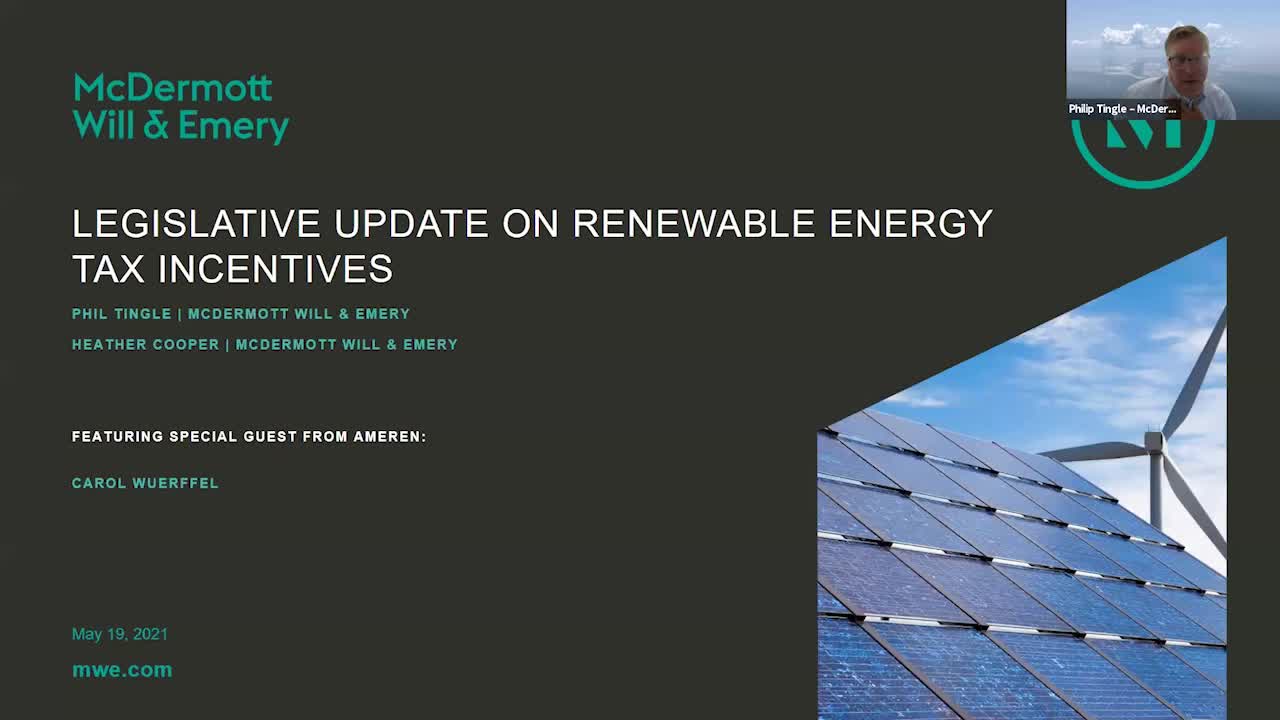The energy market has undergone significant change in the past 12 months, with even more on the horizon. Our webinar series explores how these changes have shaped—and will continue to impact—the energy industry, including discussions of what’s to come.
Our latest webinar featured McDermott partners Philip Tingle and Heather Cooper and Carol Wuerffel, Senior Director, Tax at Ameren.
 Below are key takeaways from the webinar:
Below are key takeaways from the webinar:
- Tech Neutral Credit. The Clean Energy for America Act introduced by Senator Ron Wyden (D-OR) would replace existing renewable energy incentives with technology-neutral tax investment and production credits for facilities with zero net or net negative carbon emissions. In coordination with the Environmental Protection Agency, the US Department of the Treasury would be responsible for promulgating regulations specifying qualifying technologies. The credit would be provided to partnerships and not individual partners for renewable investments made by pass-through entities.
- Direct Pay. In early 2021, House Democrats reintroduced the Growing Renewable Energy and Efficiency Now (GREEN) Act. In addition to extending and expanding the existing investment tax credit (ITC) and production tax credit (PTC), the GREEN Act would permit taxpayers to elect to claim 85% of the expanded ITC and PTC amounts as a refundable credit, even if they do not have sufficient tax liabilities to otherwise use the credits. The Wyden bill likewise would offer a direct pay election but without any discount against the tax credit. The timing of payments under the refundable credit may impact whether developers will shift from current tax-equity structures. If a developer must file a return and wait to resolve any examinations or other ongoing proceedings to receive the benefit, the refundability could be of limited value.
- Net Zero 2050. US President Joe Biden has set an aggressive climate goal of reducing greenhouse gas emissions by at least 50% below 2005 levels by 2030 and to net zero by 2050. Developers and utilities need additional certainty around the scheduled phaseouts in the ITC and PTC in order to build renewable resources to meet climate goals. While the White House has yet to back a specific package of renewable tax incentives, the proposals introduced by congressional Democrats are a likely starting place for negotiations.
To access past webinars in this series and to begin receiving Energy updates, including invitations to the webinar series, please click here.
read more

 Subscribe
Subscribe
